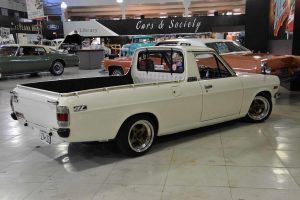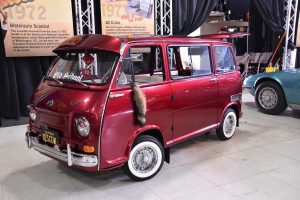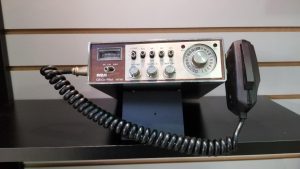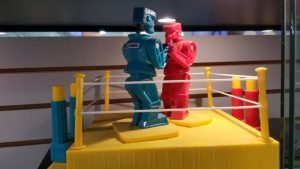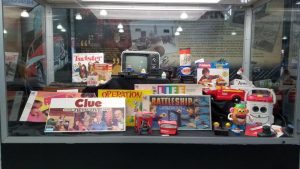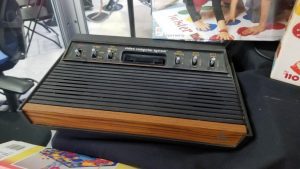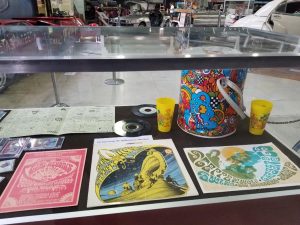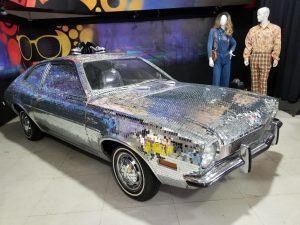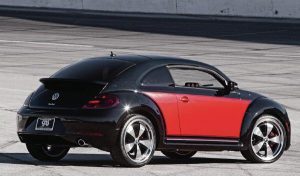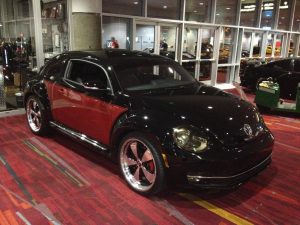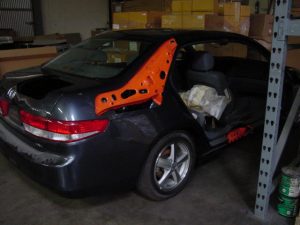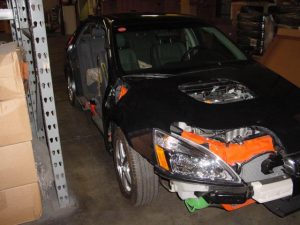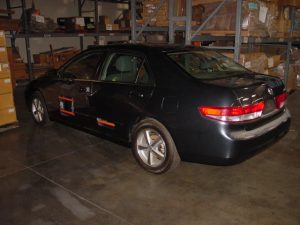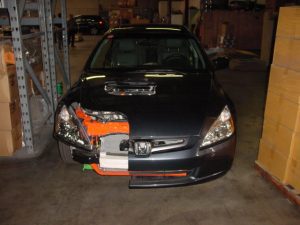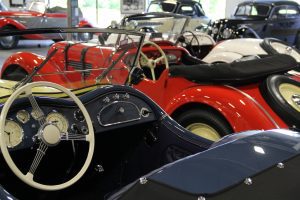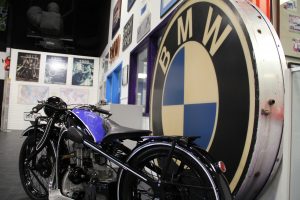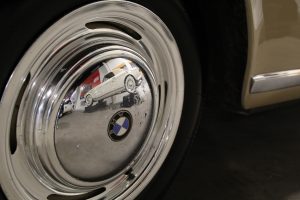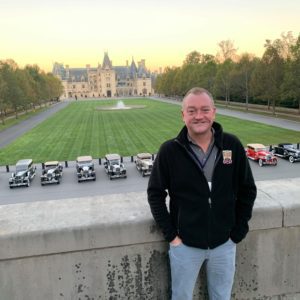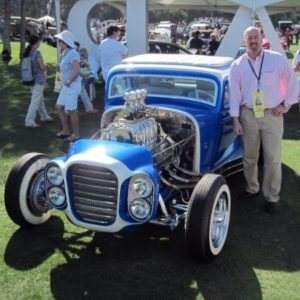NAAM E-NEWS – April 2021, Volume 22, Issue 1
In This Issue
- President’s Message
- Mission Statement
- 2021 Annual Conference
- Call for Session Proposals
- Curatorial Spotlight
- Reciprocal Admission Program
- NAAM Facebook Group
- Member Museum News
President’s Message
By: Jarrid Roulet
Greetings NAAM Members:
With 2020 now “in the books,” it was a year that tested each of us, our country, and the world around us. While the global pandemic continues, we have new hope in the recent approval and distribution of a vaccine to fight COVID-19.
We wrapped up 2020 with our first ever virtual conference with help from a company called Vid Monster. Vid Monster’s vast experience helped us bring our sessions to life through video streaming using a combination of software from Zoom and Skype. That software allowed us to be live and have meaningful dialogue between presenters and viewers alike. Technology such as this, has become pretty widespread in 2020 and will continue to be a staple for many groups in 2021. We felt, Vid Monster did a great job of facilitating our virtual conference and we all learned a lot about what can be done in the future.
Despite the pandemic, we finished 2020 with 165 registered members and financially, we are holding steady with cash reserves and hope 2021 will allow us to continue that trend moving forward.
As I settle into being president, I am very excited to say there is a lot going on within NAAM and it couldn’t be done without the support of the board members serving. From reviewing our membership programs to reworking our social media agendas we continue to work diligently to improve. As with any organization, there are always opportunities to learn new things, improve processes and build upon what has done in the past.
As we forge through 2021 our only constant will be change, much the same as we saw in 2020. Covid-19 has put a damper on many organizations within NAAM but we are optimistic together we will come out on top as vaccinations become more commonplace this year. With that in mind, we look forward to new meaningful partnerships, new members, and exciting new discussions as we plan and build on the future together.
So, remember, bring passion to each day, strive for progress that pushes you forward and never lose sight of your organization’s purpose, for there are great things yet to be done and discovered.
Jarrid Roulet
President, National Association of Automobile Museums
MISSION STATEMENT
The National Association of Automobile Museums is a professional center of excellence for automobile museums and affiliated organizations that supports, educates and encourages members to operate according to professional standards of the museum industry.
2021 ANNUAL CONFERENCE
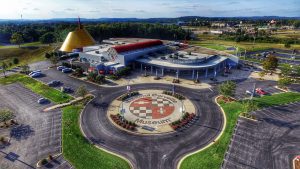 In a recent meeting of representatives from the World Forum for Motor Museums and the National Association of Automobile Museums the decision was made to postpone the joint conference intended to be held at the Revs Institute in Naples, Florida this year until November of 2022. With this announcement the NAAM board has determined that it is imperative to hold an in-person conference for 2021. The National Corvette Museum in Bowling Green, Kentucky has kindly offered to host this conference November 16-19, 2021. Due to the size of the Corvette Museum’s facilities, we feel that this will be a safe location where conference attendees can socially distance and still enjoy all the benefits our annual conference has to offer.
In a recent meeting of representatives from the World Forum for Motor Museums and the National Association of Automobile Museums the decision was made to postpone the joint conference intended to be held at the Revs Institute in Naples, Florida this year until November of 2022. With this announcement the NAAM board has determined that it is imperative to hold an in-person conference for 2021. The National Corvette Museum in Bowling Green, Kentucky has kindly offered to host this conference November 16-19, 2021. Due to the size of the Corvette Museum’s facilities, we feel that this will be a safe location where conference attendees can socially distance and still enjoy all the benefits our annual conference has to offer.
The theme for the 2021 conference will be The Next Generation. This theme is multi-faceted, as we plan to not only discuss engaging the next generation of museum visitors through exhibits, experiences, and retail, but also the next generation of the automobile industry and how the next generation of the automobile will impact the way museums will collect and interpret the past, present, and future of transportation.
In addition to the seminars, attendees can look forward to a taste of southern hospitality and cuisine, exciting (and educational) tours, and a quintessential Bluegrass State experience. Of course, there will be plenty of networking opportunities throughout the week allowing us to all share and learn from each other.
Bowling Green, KY is centrally located in the United States, making it a drivable destination for many NAAM members. For those needing to fly, Bowling Green is approximately an hour drive from the Nashville International Airport (BNA) or an hour and a half drive from the Louisville International Airport (SDF). November typically sees moderate weather and temperatures, neither too hot nor too cold.
For those museums unable to send a representative in-person, a virtual component will be available for the sessions only. More details and information will be available in the coming months.
2021 CALL FOR SESSION PROPOSALS
Proposals Due: May 14, 2021
Conference Location: Bowling Green, Kentucky
Conference Dates: November 16-19, 2021
The 2021 NAAM Annual Conference will be hosted by the National Corvette Museum in Bowling Green, Kentucky, from November 16-19, 2021. Conference organizers are seeking session proposals in both lecture and interactive/roundtable formats.
As the COVID-19 pandemic eases, NAAM members look forward to a brighter future, and to renewing their efforts to attract younger audiences to our museums – and to the automotive hobby generally. In this spirit, our 2021 conference theme is “The Next Generation.” Our goal is to provide attendees with tools to innovate, adapt and enhance all facets of museum operations. Sessions will examine both administrative and curatorial topics. They will cover interpretation, programming, and visitor experience initiatives. We hope to encourage and facilitate the sharing of ideas and experiences among attendees.
We encourage you to submit a proposal for a session at the 2021 meeting. It’s been a challenging year for us all. Share your stories of survival from 2020, or your post-pandemic plans for 2022 and beyond. Show how you used new technologies and new programs to stay connected with your audiences and your staffs – and how you plan to continue using them in the future. We can all learn from each other’s experiences as we grow to serve the next generation.
Proposals may be submitted to Christine Bobco. [email protected]
CURATORIAL SPOTLIGHT
Nonautomotive Artifacts Help Tell the Automotive Story
By Pandora Paul Sordon
Museum Consultant
As we continue to make exhibits relevant as well as enticing and educational to visitors, concentrating on the cultural cues that helped influence car manufacturing and design can be key.
While we are in the land of automobile-loving people with peers, there are significant swaths of the public that can take or leave this enthusiasm about automotive transport. Let’s be honest; some are bored to tears by the way this fandom is expressed, and “car stuff” makes little to no impact on their innate pleasure centers. Now, before you think this is going into some risqué material, it isn’t. It’s just that, that to some, cars are truly only a means of transport, and not the romantic embodiment of mechanical innovation that WE think they are. Can these people be engaged in another manner?
I am of the opinion that we are the purveyors of the value of the automobile above its primary purpose of transportation. We all know that from the outset, cars were much more than just a way to get places. The relationship between cars and consumers, cars and collectors, and cars and customizers is one complicated by self-expression, culture, and society. On the manufacturing end, so many elements influence what car designs are considered and finally realized. Why are we driving primarily non-US badged cars these days? Well… let me tell you about the 70s.
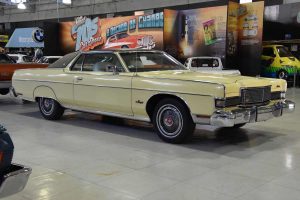
An exhibit at the San Diego Automotive Museum, which was titled That 70s Car Show, concentrated on the cars of the 1970s era but also on the dynamic cultural events that changed society and car culture so dramatically. Quick, what is your first reaction when you hear the words: “1970s Cars?”
Most common responses I have heard are: “boats,” “dogs,” and the succinct “ugly.” Do people look into why they were “boats” or “dogs?” We were coming out of the era of “bigger is better,” so is it a surprise that we were staying the course until the iceberg of the 1973 Oil Crisis struck our car manufacturers? The US had experienced rationing during WWII, but had run full speed ahead afterward. Other countries were not so lucky, having had to adapt to continued fuel and materials shortages and narrower roads, and benefited from that experience. While initially not popular, the smaller, more economical vehicles from Asia and Europe began making inroads into the U.S. and, suddenly, shockingly– were preferred.
Aside from that, the public started taking note of the environmental impacts of industry and cars. Not being able to breathe in Los Angeles and New York was a really big problem. The catalytic converter was introduced, and traditional torque, acceleration, and performance began to wither, a trade-off for “smog days.” Some initial steps were taken to try to curb the impact on the environment. Later, electric motors would more than make up for the lack of torque, and a new generation of enthusiasts cares less about that combustion sound and more about low emissions.
Bringing all this home to the visitor through vehicles and artifacts is the best approach to discuss the history holistically. Big technological changes from this era outside of cars would have impacts on both cars and society later, like the invention of the microchip and the PC. To depict these changes and show their concurrent importance, I had examples of the early computers including a mini mainframe, a TRS 80 PC, and an Apple II with floppy drive reader on display. Examples of drive-in theater speakers and “Rock ‘em Sock ‘em Robots” transport visitors back to the era, setting the scene and eliciting nostalgia for this (maybe) simpler time.
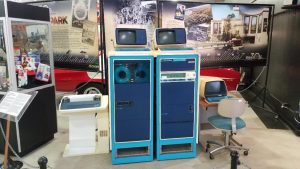
Using period artifacts invites memories, reminiscing, and reconnection. Older people love the familiar feel of these objects, and younger people are fascinated by objects from the past they would not normally see. Era music in forms of vinyl record covers by artists such as The Doors, Earth Wind & Fire, Elton John, Peter Brown, WAR, and Gloria Gaynor accompany a hi-fi set with push-button radio channels and a phonograph hidden in furniture. All give an impression of the aesthetic of the 70s, setting the stage for understanding the exhibit vehicles. Show posters from local venues showcase the era’s iconic graphic art, like the Jimi Hendrix poster from a concert in San Bernardino. Examples of car cassette players and 8-track tapes along with classic rock and funk LPs show how music playing in and out of cars evolved. 1970s toys such as Tinker toys, Atari video games, Mr. Potato Head, Risk, Battleship, and Clue evoke a sense of play. Guests can peruse 70s baseball and football cards to find greats such as Fran Tarkinton or Terry Bradshaw or Walter Payton.
Through the elements of music, toys, and tech in concert with automobiles, we span automotive and nonautomotive genres and invite engagement on many levels, supporting education and guest interaction through these informal methods. The museum is frequented by multigenerational family groups, and the exhibit aims to facilitate conversation about what film cameras are and how rotary phones work as much as why the cars look like boats. Igniting imagination and learning in a fun and interactive way is what all museums (should) aspire to, and adding objects is one way to make that feat possible.
With the convenience and benefit of hindsight, we can study the 70s as an epoch that spawned so much of our reality today. As such, it was a seemingly a simpler time; one where kids rode bikes doing wheelies and stayed out playing until dusk with no supervision, and one that impacted car history and society in general. We now live in an era when we rely on those steps taken to save our environment, our health, and our sanity. These artifacts and their accompanying information bring the past alive and vividly relay the true importance of the 70s as a decade of pivotal social and technological change.
During Covid-19, the sometimes-controversial increased reliance and the internet and electronic devices and for remote social connections and entertainment is only possible because of the microchip and the Transmission Control Protocol/Internet protocol created in 1970s.Today we are learning more and more about the consequences of these technologies, for better or worse. The personal devices which we use on a constant basis would not have been possible if PC technology had not been developed. And now surviving quarantines is reliant on these technologies. How many series have you streamed during the pandemic? I will be first to admit, way too many!
Drawing on the environments of when automobiles came into being helps involve the visitors in personal explorations of the time and gives a more empathetic understanding of the rolling artifacts being presented. How did things look? What was life like? What were the hot topics of the day? Why were the Gremlin and the Pacer made? And why, in the case of the Pacer, were they ultimately unsuccessful?
Approaching the volumes of automotive history and culture by immersive exhibit is both educational and entertaining. Using seemingly disparate era artifacts to help tell the story of the vehicle enriches the experience and makes a deeper impression. It invites reminiscing how far out and funky cool the 70s were.
Pandora Paul Sordon is a museum educator and curator.
She offers consulting services nationwide and can be reached at [email protected].
RECIPROCAL ADMISSION PROGRAM
Did you know NAAM has a Reciprocal Admission Program to promote professional development and networking opportunities among member museums? There are 102 museums that are members of NAAM and to date 38 have joined the program. Sign your museum up today! Just email [email protected] to sign up.
NAAM ON SOCIAL MEDIA
Follow the NAAM Facebook Page and search NAAM Private Group to join the NAAM members only group. This space is in conjunction with the NAAM Online Community and is a great place to share successes and challenges, gather ideas, and network with member museums.
Don’t forget to submit your collection photos for the ABCs of NAAM Museums. NAAM is beginning a new social media initiative utilizing the popular ABC trend on our public facing media channels. Beginning in June, we will be posting a vehicle every Monday beginning with the letter A, then B, and then C…you get the idea.
We want to share your cars and their special stories while creating interest from our audience, both NAAM members and the general public, to want to see more of your museum. Who doesn’t want free advertisement? All you need to do is click the link button below, fill out the form, and submit to Terri Coppens at [email protected]. Submit as many as you like.
We will alternate locations so every museum that submits a car is represented. Once we hit the end of the year and the end of the alphabet, we will start all over again. So if your “A” vehicle doesn’t make the first cut, don’t fret, your time will come! We look forward to receiving your entries!
MEMBER MUSEUM NEWS
Auburn Cord Duesenberg Automobile Museum Receives Highest National Recognition: Awarded Re-Accreditation from the American Alliance of Museums
(AUBURN, IN) – The Auburn Cord Duesenberg Automobile Museum has again achieved accreditation by the American Alliance of Museums, the highest national recognition afforded the nation’s museums. Accreditation signifies excellence to the museum community, to governments, funders, outside agencies, and to the museum-going public. The Auburn Cord Duesenberg Automobile Museum was initially accredited in 1997. All museums must undergo a reaccreditation review at least every 10 years to maintain accredited status.
Alliance Accreditation brings national recognition to a museum for its commitment to excellence, accountability, high professional standards, and continued institutional improvement. Developed and sustained by museum professionals for over 45 years, the Alliance’s museum accreditation program is the field’s primary vehicle for quality assurance, self-regulation, and public accountability. It strengthens the museum profession by promoting practices that enable leaders to make informed decisions, allocate resources wisely, and remain financially and ethically accountable in order to provide the best possible service to the public.
“Accreditation by the American Alliance of Museums signifies that the Museum is committed to excellence through the highest professional standards for education, public service, collections care, good governance practices, and ethical behavior,” states Brandon J. Anderson, Executive Director & CEO of the museum. “We are very proud of our museum and this recognition further validates our hard work and commitment to being a top-tier institution that serves the public.”
The museum’s reaccreditation report authored by its peer reviewers stated, “ACDAM is exemplary in many ways. The quality of its overall presentation is commendable, and local community members and enthusiasts of vintage automobiles and Auburn, Cord and Duesenberg products appear to hold it in very high regard. Its connections to the historic structure that it occupies is strong and unique as well. The museum field should be very proud of having this institution in its ranks.”
Of the nation’s estimated 33,000 museums, just over 1070 are currently accredited. The Auburn Cord Duesenberg Automobile Museum is one of only 26 museums accredited in Indiana.
Accreditation is a very rigorous but highly rewarding process that examines all aspects of a museum’s operations. To earn accreditation a museum first must conduct a year of self-study, and then undergo a site visit by a team of peer reviewers. AAM’s Accreditation Commission, an independent and autonomous body of museum professionals, considers the self-study and visiting committee report to determine whether a museum should receive accreditation.
“Accredited museums are a community of institutions that have chosen to hold themselves publicly accountable to excellence,” said Laura L. Lott, Alliance president and CEO. “Accreditation is clearly a significant achievement, of which both the institutions and the communities they serve can be extremely proud.”
-Walter J Fisher, Marketing & Communications Manager
Auburn Cord Duesenberg Automobile Museum Receives $249,725 Grant to Complete an All-New Permanent Gallery and Exhibition
(AUBURN, IN) – The Auburn Cord Duesenberg Automobile Museum has been awarded a grant from the Indiana Destination Development Corporation (IDDC) in the amount of $249,725 for the completion of an all-new permanent gallery and exhibition, the E.L Cord Gallery of Entrepreneurship. Second place went to the city of Greensburg to build Pirate Park Community Green Space and Soccer Facility.
“Both of these grant awardees offer unique attractions and build on Indiana’s quality of life,” said Lt. Gov. Suzanne Crouch. “The Destination Development Grants will not only boost Auburn and Greensburg, but also serve as new reasons to bring people to their regions.”
The new E.L. Cord Gallery of Entrepreneurship will feature outstanding artifacts, graphic images, and interactive exhibit components that will educate and inspire audiences. The gallery will contain a 1931 Stinson AT-19 that was originally owned by the Auburn Automobile Company, a 1933 Checker cab that was built during the time of Cord’s ownership, and a 1937 Cord that was E.L. Cord’s personal car. In terms of small artifacts, the gallery will have personal items of Cord’s, examples of some of the products that he produced, and snippets from home movies and the family scrapbooks.
“The museum is honored to be the recipient of this grant, which will build upon the legacies and history that we preserve, interpret, and exhibit on a daily basis,” said Brandon J. Anderson, Executive Director & CEO of the Auburn Cord Duesenberg Automobile Museum. “The story of E.L. Cord is of the consummate entrepreneur, and there is so much to share about his life and businesses that will engage current and future generations to become business leaders in their own right. We are partnering with strong organizations in northeast Indiana to share this story and be an inspiration for others.”
The gallery will delve into the business phenomenon of the entrepreneur and what makes them different from other people. It will provide contemporary examples of those individuals who are still making a striking impact in business. Cord’s personal and business life will be further explored, including key Cord business associates such as Harold Ames, Lucius Manning, Raymond Pruitt, and other pertinent individuals that were part of the Cord Corporation.
“By funding these projects, we are investing in amenities, attractions, and facilities that enhance the experience where people want to live, work, play, study and stay,” said Elaine Bedel, Secretary and CEO of IDDC. “I look forward to seeing the impact the new museum gallery and the community space and soccer facility will have on their respective regions as well as Indiana.”
-Walter J Fisher, Marketing & Communications Manager
The Frank Buonanno Scholarship Fund:
A Piston Foundation Legacy Fund
The Piston Foundation is proud to announce the launch of the Frank Buonanno Scholarship Fund, our first Legacy Fund scholarship.
The fund has been created in partnership with John Buonanno and Black Horse Garage of Bridgeport, CT in honor of John’s father, who founded the renowned restoration shop in 1991.
Frank Buonanno is a storied craftsman and restorer of classic Italian cars. Master mechanics like Frank, are an endangered species today, many are retiring without young people ready to take their place. It’s a threat to the car hobby we love.
To solve this problem the scholarship will offer the opportunity to follow in Frank’s footsteps by providing scholarships and apprenticeships to students who are pursuing careers in collector car restoration.
Read the press release and check out the campaign page.
Collections Transfer: The Petersen Automotive Museum
The Petersen Automotive Museum would like to offer the following vehicles for transfer free of charge to another 501(c)3 nonprofit entity, be it an automotive museum, technical museum, or other qualified collecting museum: 2013 Volkswagen custom, 1993 Dodge Ram Van CNG Powered, 2003 Honda Accord cutaway.
2013 Volkswagen custom
- By Galpin Auto Sports
- Built for SEMA 2012
- Outstanding condition
- No title, bill-of-sale transfer only
- Missing Federal Motor Vehicle Safety Standard label
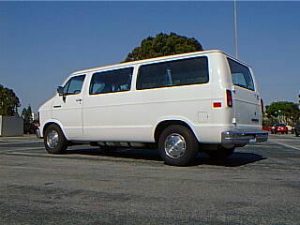
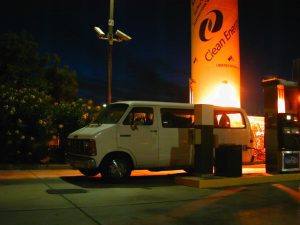
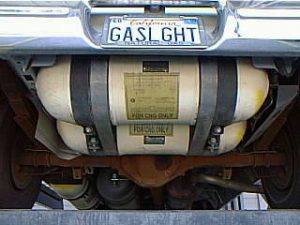
1993 Dodge Ram Van CNG-powered
- First CNG vehicle series-produced by a major manufacturer
- Outstanding condition
- Fuel tanks certification expired
- Title currently in name of PAM
2003 Honda Accord cutaway
- Professionally modified
- Outstanding condition
- No title, bill-of-sale transfer only
Interested parties may contact Leslie Mark Kendall, Chief Historian, 323-964-6340 or [email protected].
Virtual Tour Sharing: The Petersen Automotive Museum
The Petersen Automotive Museum would like to take the opportunity to share links to a few of its current online museum tours and would very much appreciate it if any NAAM member museums (or potential member museums) that offer virtual tours of their own reciprocate by sharing links to them with the rest of the NAAM membership. Following is a sampling of the virtual tours that offered by the Petersen Museum:
Our collective ambition to bolster NAAM’s relevance as a professional resource will be greatly enhanced by such an exchange of information and we look forward to seeing what everyone else has to offer!
Links can be sent to [email protected] for distribution to the NAAM membership.
GENESIS: BMW From the Beginning exhibits rare cars, highlights BMW’s early history at BMW CCA Foundation museum
Extended to May 21, 2021! GENESIS: BMW From the Beginning, Presented by The Werk Shop features twenty significant cars and four equally compelling motorcycles at the BMW CCA Foundation Museum in Greer, South Carolina.
The exhibit tells the story of BMW’s early history as a maker of airplane engines during World War I, through its expansion into motorcycle and automobile production in the 1920s. With informative kiosks and fascinating vintage photography, the exhibit guides visitors through five decades of BMW history. GENESIS illuminates the company’s technical innovations as well as its role in supplying the German military through two world wars, and its re-emergence as a peacetime mobility company in the aftermath of World War II.
Produced with sponsorship from The Werk Shop, Classic BMW of Plano, Texas, CocoMats, and Yokohama Tires, GENESIS has assembled the most comprehensive collection of pre- and early post-war BMWs ever seen in North America. Motorcycles like BMW Classic’s race-winning R47 sport bike and the Depression-era R2 single (on loan from the Lane Museum in Nashville) will give visitors an up-close look at BMW’s early two-wheelers. The sidecar-and-trailer-equipped R75 loaned to the Foundation by Jack Wells will provide a rare vantage point to BMW’s World War II-era production for the German military, while Wells’ R24 single represents BMW’s earliest postwar vehicle.
The automobiles on display in GENESIS are equally rare, and several are the only examples of their kind in the US. Together, they take visitors through BMW’s astoundingly rapid development as a carmaker in the 1930s, when its race-winning roadsters gained world renown, to its resurrection with the Baroque Angel sedans in the 1950s.
Automotive highlights include:
—Colleen Sheehan’s 1930 3/15 PS DA2 Cabriolet, believed to be the oldest BMW in North America;
—Jim and Mary True’s 1934 309, a fine example of BMW’s first-generation cars of its own design;
—A trio of prewar roadsters: Manny Carter’s 319/1, Dirk de Groen’s 315/1 and de Groen’s early-production 1937 328;
—A 1940 327/28 cabriolet presented by BMW to motorcycle hero Schorsch Meier following his victory in the Isle of Man Senior TT, and now owned by Rick Meinig;
—The Drauz-bodied 321 cabriolet restored in the Czech Republic for Manny Carter and now owned by Lance and Diane White;
—A 1940 335 four-door cabriolet, one of just nine such cars with Autenrieth coachwork and probably the only US example of BMW’s last prewar car, loaned to the Foundation by Karra Canum;
—A pair of EMWs, built at BMW’s former factory in Eisenach under Soviet control. The 340 sedan owned by the late Jim Smith and the 327/3 owned by Rocky and Henry Grady are likely the only models of their kind in the US;
—Two Baroque Angels, BMW’s first automobile of the postwar era, owned and restored by Alf Gebhardt and Lothar Scheuttler;
—A 1957 507 roadster ordered when new by Oscar Liebmann, BMW’s first motorcycle dealer in the US;
—Karra Canum’s 1958 503 cabriolet, restored by The Werk Shop to her exacting specifications, and a trophy winner at Pebble Beach in 2014;
—A 1965 3200 CS whose bodywork represents Giorgetto Giugiaro’s first styling project for Bertone, restored by The Werk Shop and now owned by Kevin Whalen;
—Classic BMW’s Isetta 300, normally on display in the dealership’s showroom in Plano, Texas;
—David Lowen’s lovingly restored 1959 600, which spent decades in the care of its devoted second owner in Illinois;
—Steve Walker’s 1960 700, a rear-engined racer known as “the workingman’s Porsche,” and which Steve continues to race to this day.
The exhibit includes extensive archival photos and stories, and an audio tour is available for download to mobile phones.
GENESIS: BMW From the Beginning, Presented by The Werk Shop is on view at the BMW CCA Foundation through January 2021. Located just off Highway 101 and virtually next door to the BMW Performance Center at 190 Manatee Court, Greer, SC 29651, the museum is open Monday through Saturday from 9 to 5, closed on major holidays. Admission is $12 for adults, $6 for those age 6-17, and free for those age 5 and under. To ensure the safety of visitors and staff during the COVID-19 pandemic, masks are required inside the Museum, and traffic is one-way through the exhibit.
If you can’t make it to the Museum, a virtual tour is available online at www.bmwccafoundation.org.
If you’d like to learn more about BMW history and the cars of GENESIS, a 166-page, full-color exhibit book written by Jackie Jouret is available from the BMW CCA Foundation Store, in softcover and limited-production hardcover editions.
For more information, visit www.bmwccafoundation.org or telephone (864) 329-1919.



